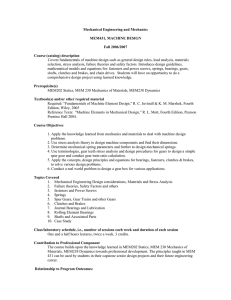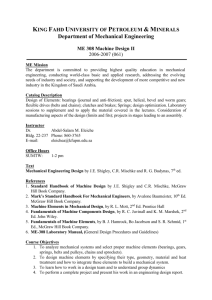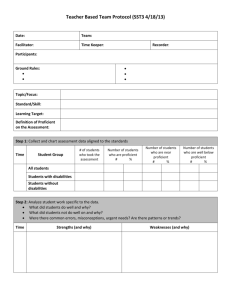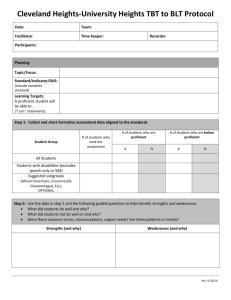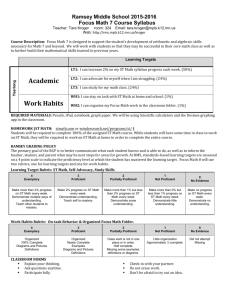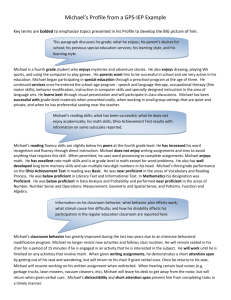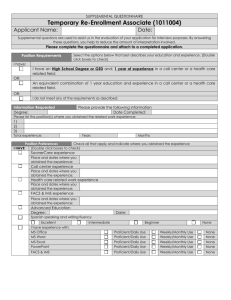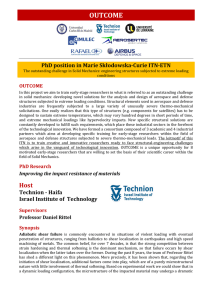Design of Machine Elements
advertisement
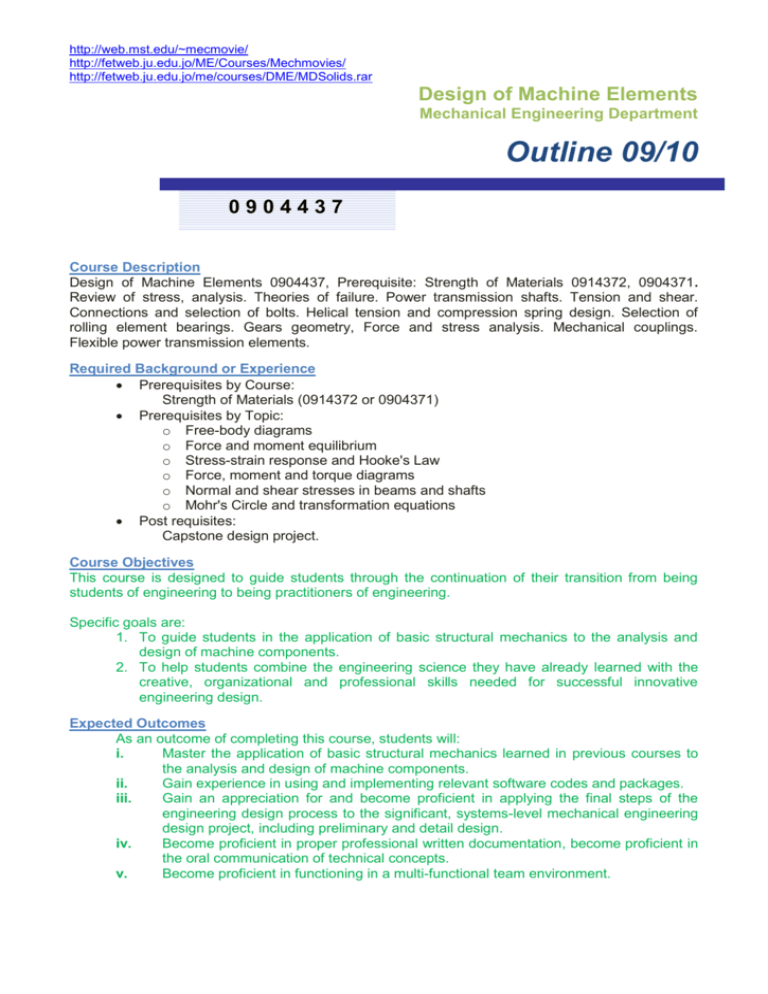
http://web.mst.edu/~mecmovie/ http://fetweb.ju.edu.jo/ME/Courses/Mechmovies/ http://fetweb.ju.edu.jo/me/courses/DME/MDSolids.rar Design of Machine Elements Mechanical Engineering Department Outline 09/10 0904437 Course Description Design of Machine Elements 0904437, Prerequisite: Strength of Materials 0914372, 0904371. Review of stress, analysis. Theories of failure. Power transmission shafts. Tension and shear. Connections and selection of bolts. Helical tension and compression spring design. Selection of rolling element bearings. Gears geometry, Force and stress analysis. Mechanical couplings. Flexible power transmission elements. Required Background or Experience Prerequisites by Course: Strength of Materials (0914372 or 0904371) Prerequisites by Topic: o Free-body diagrams o Force and moment equilibrium o Stress-strain response and Hooke's Law o Force, moment and torque diagrams o Normal and shear stresses in beams and shafts o Mohr's Circle and transformation equations Post requisites: Capstone design project. Course Objectives This course is designed to guide students through the continuation of their transition from being students of engineering to being practitioners of engineering. Specific goals are: 1. To guide students in the application of basic structural mechanics to the analysis and design of machine components. 2. To help students combine the engineering science they have already learned with the creative, organizational and professional skills needed for successful innovative engineering design. Expected Outcomes As an outcome of completing this course, students will: i. Master the application of basic structural mechanics learned in previous courses to the analysis and design of machine components. ii. Gain experience in using and implementing relevant software codes and packages. iii. Gain an appreciation for and become proficient in applying the final steps of the engineering design process to the significant, systems-level mechanical engineering design project, including preliminary and detail design. iv. Become proficient in proper professional written documentation, become proficient in the oral communication of technical concepts. v. Become proficient in functioning in a multi-functional team environment. Textbook(s) and Readings 1. Fundamentals of Machine Elements, Hamrock, Schmid and Jacobson, McGraw Hill international edition. 2. Mechanical Engineering Design, J.E. Shigley and C. R. Michke, 7th edition, McGraw Hill. 3. Machine Elements in Mechanical Design, R. Mott, 4th edition, Prentice Hall. 4. Mechanics of Materials, Beer and Johnston, McGraw Hill. 5. http://web.mst.edu/~mecmovie/ 6. http://fetweb.ju.edu.jo/ME/Courses/Mechmovies/ 7. http://fetweb.ju.edu.jo/me/courses/DME/MDSolids.rar Minimum Student Materials Texts, class handouts, engineering calculator, and an access to Personal Computer. Minimum College Facilities Classroom with blackboard and projection facilities; library; computer facilities. Course Outline The following topics will be covered in this course: ▬ Load, Stress and strain review ▬ Normal, torsional, bending and transverse shear stresses and strains. ▬ Failure prediction for cyclic and impact loading. ▬ Shafting and associated parts ▬ Rolling element bearings ▬ Gears ▬ Fasteners and power screws ▬ Springs Instructional Methods 1. Lecture/Problem solving sessions. 2. Term Project 3. Homework Evaluation of Outcomes Evaluation will be carried out based on the following: a. Midterm exam: 15% b. Class activities, Assignments and Team Projects: 30% The assigned problems/projects are somewhat open-ended, and the required reports are graded on technical content and format/quality of presentation, etc. c. Quizzes: 5% d. Final Exam: 50% Professional Component Contribution The student gains the ability to understand the fundamental concepts on how to analyze mechanical and structural systems and to be able to do original thinking.

